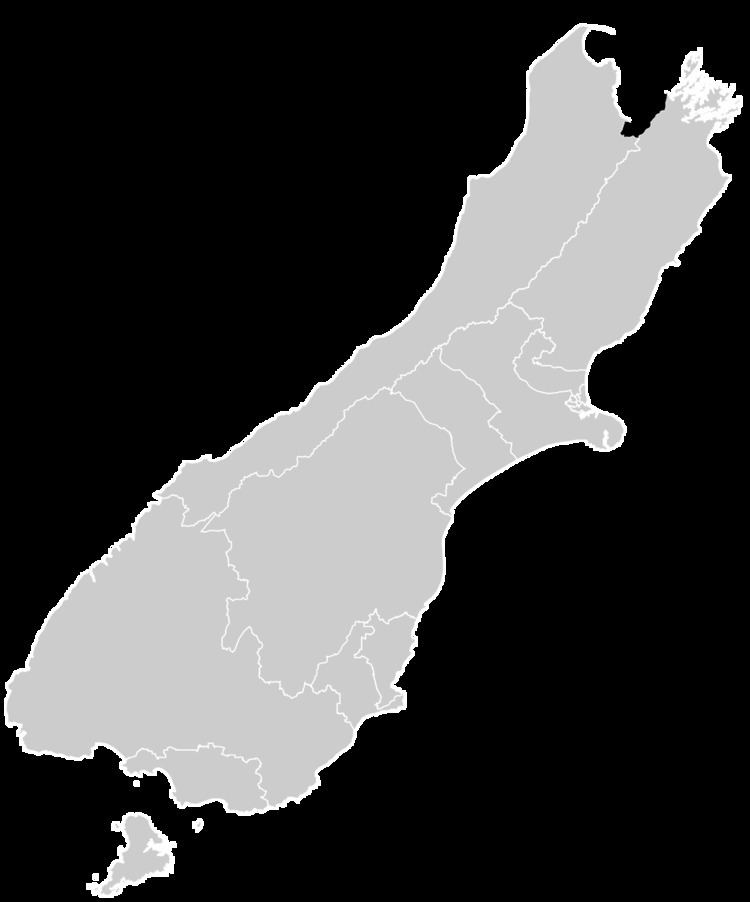 | ||
Points of interest Abel Tasman National, Nelson Lakes National, World of Wearable Art, Kahurangi National Park, Natureland Wildlife Trust Destinations Nelson, Abel Tasman National, Nelson Lakes National, Kahurangi National Park, Cable Bay | ||
Nelson is a New Zealand parliamentary electorate, returning one Member of Parliament to the House of Representatives of New Zealand. From 1853 to 1860, the electorate was called Town of Nelson. From 1860 to 1881, it was City of Nelson. The electorate is the only one that has continuously existed since the 1st Parliament in 1853.
Contents
- Map of Nelson New Zealand
- Population centres
- History
- Members of Parliament
- List MPs
- 2011 election
- References
Map of Nelson, New Zealand
The current MP for Nelson is Nick Smith of the National Party. He has held this position since 1996.
Population centres
Nelson is based around the city of Nelson, with the dormitory town of Richmond and the smaller communities of Hope and Brightwater drafted in to bring the electorate up to the required population quota.
A significant adjustment to the electorate's boundaries was carried out ahead of the change to Mixed Member Proportional (MMP) voting in 1996; the decrease in South Island electorates from 25 to 16 lead to the abolition of one western South Island electorate; Tasman was split between West Coast and the then (geographically) much smaller Nelson electorate.
The Representation Commission last adjusted the boundaries in the 2007 review, which first applied at the 2008 election; the electorate was not changed in the 2013/14 review.
History
An electorate based on the Nelson has been contested at every election since the first Parliament in 1853. Two of the original 24 electorates from the 1st Parliament still exist (New Plymouth is the other one), but Nelson is the only original electorate that has existed continuously.
The electorate was initially known as Town of Nelson. From 1866 to 1881, it was called City of Nelson. Since 1881, it has been known as simply Nelson.
From 1853 to 1881, Nelson was a two-member electorate. James Mackay and William Travers were the first two representatives elected in 1853. Travers and William Cautley (MP for Waimea) both resigned on 26 May 1854. Travers subsequently contested the seat that Cautley had vacated, being elected in the 21 June 1854 Waimea by-election. Samuel Stephens, who succeeded Travers in Nelson, died before the end of the first term, but the seat remained vacant.
Alfred Domett retired from politics at the end of the 3rd Parliament. Edward Stafford resigned in 1868 during the term of the 4th Parliament. Nathaniel Edwards won the resulting by-election. Martin Lightband resigned after a year in Parliament in 1872 and was succeeded by David Luckie.
Nelson became a single member electorate in 1881. Henry Levestam, who was first elected in an 1881 by-election to replace Adams was confirmed by the voters at the next three general elections (1881, 1884 and 1887), but he died in office on 11 February 1889.
Joseph Harkness won the resulting 1889 by-election and was confirmed in the 1890 election. He retired at the end of the parliamentary term in 1893 and was succeeded by John Graham, who with the 1893 election started a representation of the electorate that would last until his retirement in 1911.
Harry Atmore an Independent Member of Parliament succeeded John Graham in the 1911 election, but he was defeated at the next election in 1914 by Thomas Field of the Reform Party. At the subsequent election in 1919, Atmore defeated Field and represented the electorate until his death on 21 August 1946.
Atmore's death did not cause a by-election, as the 1946 election was held in November of that year. The contest was won by Edgar Neale of the National Party. He held the electorate until 1957, when he retired.
Neale was succeeded by Stanley Whitehead of the Labour Party in the 1957 election. This started Labour's dominance in the electorate, which was to last for four decades. Whitehead died on 9 January 1976 in the office and this caused the 1976 by-election, which was won by Labour's Mel Courtney. In the 1981 election, Courtney stood as an Independent against Labour's Philip Woollaston, with the latter the successful candidate. Woollaston retired in 1990 and was succeeded by Labour's John Blincoe. When the electorate was enlarged for the 1996 election, it absorbed most of the former seat of Tasman, held by National's Nick Smith. Smith defeated Blincoe and has held the seat ever since.
In the 2014 election, Smith beat Labour's Maryan Street for the third time in a row. Based on preliminary results, Street has also lost the list MP seat that she has had since the 2005 election; she was the highest-ranked member on the Labour list who did not get returned or elected to Parliament.
The gap between National and Labour contesting the list vote has narrowed - 43% to 36% in Labour's favour at the 2005 election versus a 45%-19% split three years earlier. Nelson is also an electorate in which the Green Party performs better than the national average - nearly nine percent in 2002 and 7.7 percent in 2005.
Members of Parliament
Key
Independent Conservative Liberal Reform National Labour Green
List MPs
Members of Parliament elected from party lists in elections where that person also unsuccessfully contested the Nelson electorate. Unless otherwise stated, all MPs terms began and ended at general elections.
2011 election
Electorate (as at 26 November 2011): 46,817
